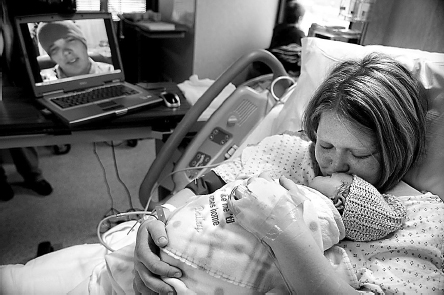Mediated Nonverbal Communication
Mediated Nonverbal Communication
Page 114

At a conference, a colleague told an interesting story about nonverbal communication and e-mail—a story that you may have experienced from both sides. She asked her students to submit their assignments via e-mail by midnight on the date they were due. At 1:00 A.M., she received a frantic e-mail from one of her students, Aaron, explaining that laptop malfunctions had prevented him from sending his speech outline until then. As Aaron typically provided quality work and never missed deadlines, our colleague was not concerned and did not intend to penalize him. So she simply wrote back “Got it” to let him know she had received his outline. When she later saw Aaron in class, she was shocked to learn that her e-mail worried him. He took her short response as a sign of annoyance for his lateness; she meant the response as a quick assurance. In the end, Aaron noted, “If you had used a smiley face, I would have known what you meant.”
Punctuation (or the lack of it) can help readers “hear” the intonation of what is being said (many people say that they “hear” their friend’s e-mails in that friend’s “voice”).
When you speak with someone face to face, you’ve got a number of nonverbal codes at your disposal. Even on the telephone, where you have no visual cues, you can use paralinguistic cues (vocal tone, rate, pitch, volume, sighs) to offer information. But when you write a letter or send an e-mail, an IM, or a text message, many of the nonverbal channels you rely on (eye contact, paralanguage, and so on) are unavailable. However, people have developed a series of creative substitutions for nonverbal cues: capital letters to indicate shouting; creative use of font sizes, colors, and typefaces to provide emphasis; random punctuation (#@*&!) to substitute for obscenities; and animations, figures, diagrams, and pictures to add visuals to messages. Punctuation (or the lack of it) can help readers “hear” the intonation of what is being said (many people say that they “hear” their friend’s e-mails in that friend’s “voice”).
THINGS TO TRY
Play with text-to-speech features on your computer. Compare the way the machine reads a passage of text to the way you would read it. Do you have a choice of voices to use, and is there one you prefer? Would you rather listen to an audiobook performance by a noted actor or a computer-generated voice reading the same material?
As Aaron noted in our example, some individuals expect others to use emoticons in mediated texts to help clarify meaning—whether to express emotion or to signal that something is a joke. Emoticons can also strengthen the intensity of a message, add ambiguity (was that really a joke?), or indicate sarcasm (Derks, Bos, & von Grumbkow, 2008). One study in Japan even found that college students use positive emoticons as a “flame deterrent” to try to prevent emotional misunderstandings that might upset others (Kato, Kato, & Scott, 2009). Since we can’t hear voice inflection or see facial expressions in many mediated situations, effective use of the keyboard and computer graphics can help create a sense of nonverbal immediacy (O’Sullivan, Hunt, & Lippert, 2004).
As technology becomes more widely available and affordable, our electronic communication will likely become open to more nonverbal channels. Skype and similar services, for example, allow us to have visual, as well as audio and text, contact.